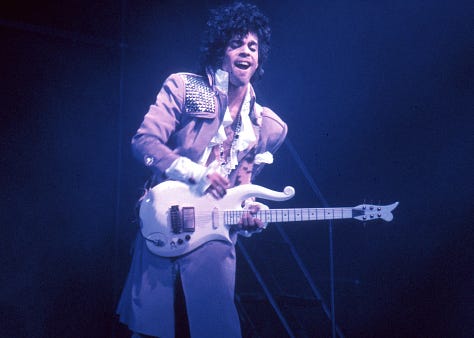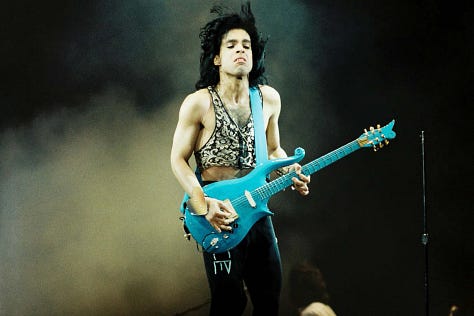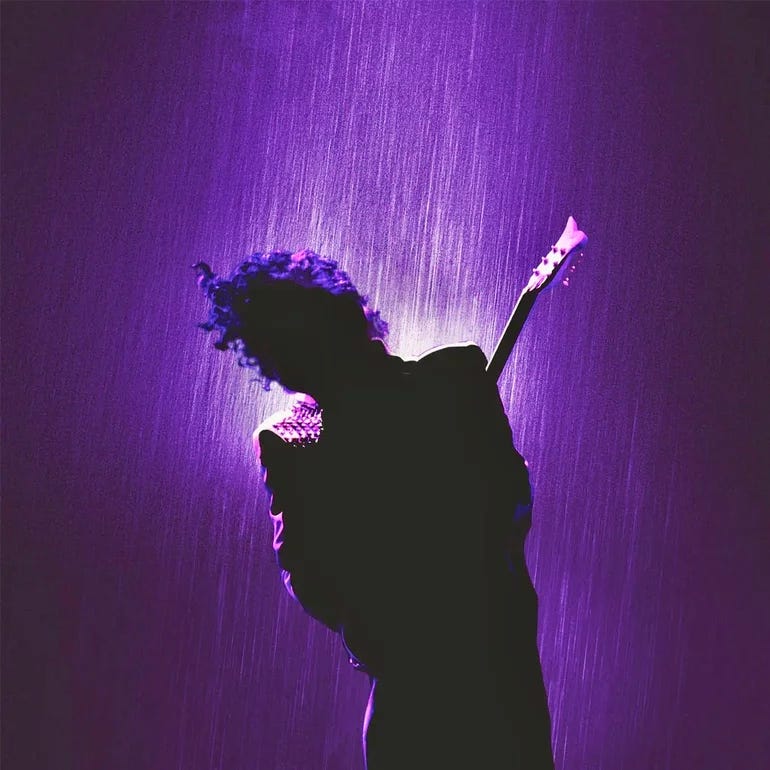39 studio albums; four movie soundtrack albums; four live albums; six compilation albums; 136 music videos; 13 EPs; and 104 singles. Those are the stats from none other than the artist formerly known as Prince. Considered by many as one of the most influential artists of the 20th century, he posthumously received the Grammy’s Lifetime Achievement Award on Sunday. This is an accomplishment only a handful of people in the world will ever be considered for, much less receive. Outside of his music, he was known for his eccentric style. So many of his outfits departed from most black musicians at the time. The evolution of his fashion sense has been studied several times over, giving us a better glimpse into how much of a priority it was in his life.
Even though his father was a successful jazz musician who worked two jobs and his mother was a social worker, Prince still grew up modestly. He would often shop at secondhand stores because that’s all they could afford at the time. But as you can see below, he still knew what looked good even before the fame. One reason I think he really took control of his style was his relationship with his father, John Nelson. John often joked that Prince would never be as good as him. When his parents separated and John moved out, Prince knew he wanted to be a musician, but the jabs from his dad made him worry that he actually wasn’t talented enough. We all know how that turned out. Confidence in one area of your life can dramatically improve how you see yourself, which usually translates to putting time into how you look.
Prince was destined to be unconventional. His sophomore album featured a shirtless picture of him on front cover with a picture of him naked while riding a horse on the back cover. From there he started putting his own touch on the 80s rock outfit that was popular at the time. He would go from snug fitting two piece suits to no shirt, underwear, and thigh high boots, and quite literally everything in between. Though he pushed the limits to what music fans were used to seeing, it always fit perfectly with the music he was performing. Album after album, concert after concert, he’d be in complete different looks and they always matched his aura.



For years I assumed Prince had luxury stores on speed dial for all his needs. But he took it one step further than most of us and started designing his own clothes. Prince’s stylist (a title that Gwen Leeds is hard-pressed to label herself as) mentioned that he was meticulous about each and every outfit he wore. So much so that the wardrobe department at Paisley Park employed more people of any team he had on staff. Gwen also states that “'There weren’t meetings—he never sat down and said, ‘Go get me a blue sequined suit.’ You had to feel it out.1” He often rejected designer clothes that would get sent to him for free, citing that he never wanted to be beholden to anyone. If that’s not the mark of someone who curates the perfect vibe every time, I don’t know what is.
Prince’s style was also influenced with how he perceived his own sexuality. The heels, the creation of his Love Symbol, the permed hair, etc. all allowed him to draw from his favorite parts of different sexes. The idea of gender fluidity may seem new to some, but artists like Miguel, Little Richard, and Janelle Monáe have also been doing this for years. An understanding that how you can present yourself to the world in clothes that might not fit gender norms is not only expressive but also allows people to find their own lane and flourish within it.
I wish he was still alive to accept the prestigious award himself a few nights ago, but I’d like to think he knows how much of a legacy he left behind. His presence truly was a present, and generations to come will continue to benefit from this gift.
“Q&A with Gwen Leeds”, Mpls St. Paul Magazine




